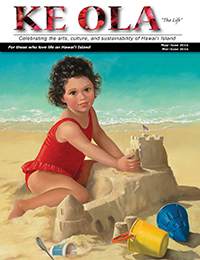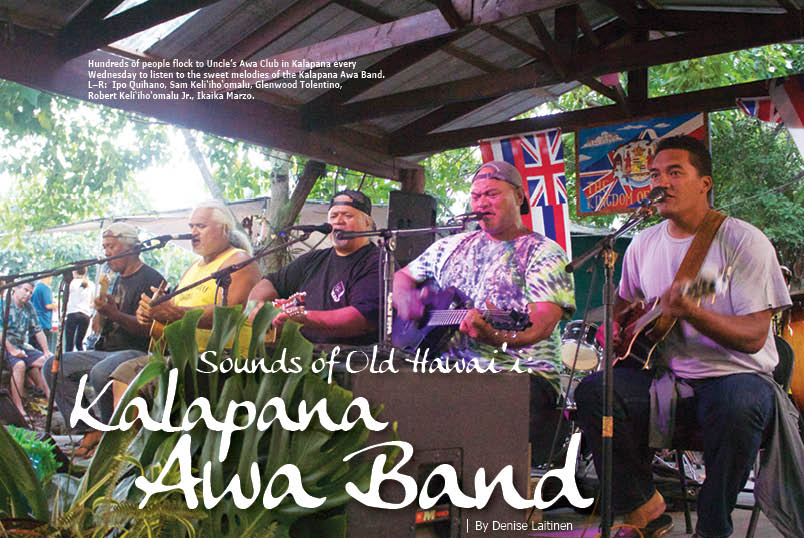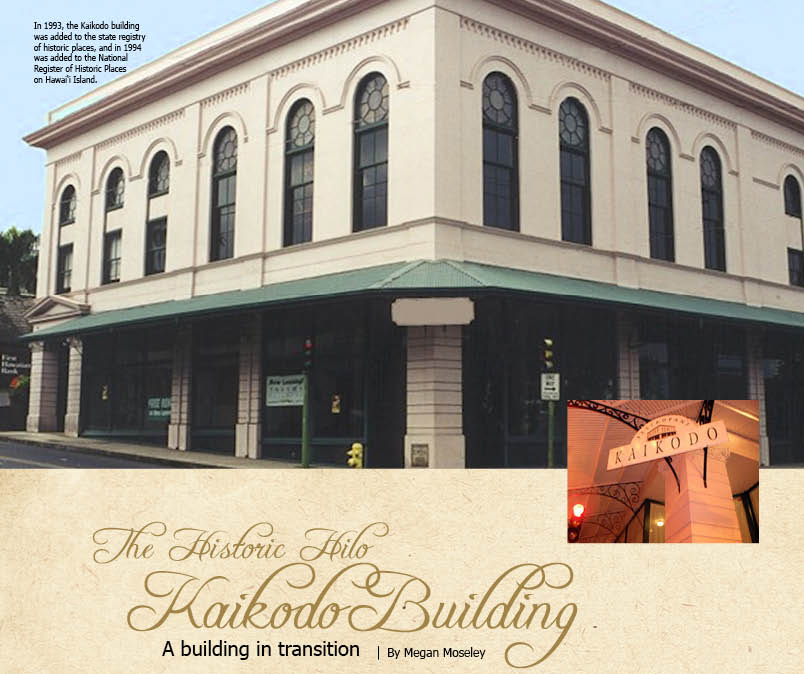
Ke Ola Pono: Ke Lei Olakino,the Healing Lei

By Leilehua Yuen
In honor of Lei Day (May 1st), I thought I’d write about the use of the lei in traditional healing. I originally was taught by Aunty Nona Beamer to use the lei lā‘ī (lei from the leaf of the Cordyline fructosa or tī plant) in various protocols for hula and pule, prayer.
Later, in a workshop with Sylvester “Papa K” Kepelino, he encouraged me to continue to do so in my practice of lomilomi, hamo, and ho‘oponopono. Imagine how pleased I was to later find a family photo, dated 1931, in which one of my own kūpuna is wearing that exact same style of lei!
The lei lā‘ī is probably the most familiar lei used in ceremony and healing.
I call the tī plant “the Hawaiian top kitchen drawer.” From it I can make twine, wrapping paper, disposable plates, baker’s paper, “aluminum foil,” “aspirin” to reduce fever, heating pads, and it is a spiritual pale (protection) to keep negative influences from coming inside its bounds.
Back in the 90s, when I underwent major surgery, Aunty Nona accompanied me to the hospital making lei lā‘ī as we traveled. Of course, I could not wear it into the surgery, so as I was wheeled through the big swinging doors she held the lei above my head and chanted for me. When I awoke, groggy and sore, my eyes were greeted by lei lā‘ī surrounding me in my recovery room—the foot of my bed, the head of my bed, my bed rails—all had lei lā‘ī tied to them, as did the whiteboard on the wall before me. Whether it was the specific efficacy of the lei, the surrounding aloha they represented, or other reasons, I was later told that I had healed remarkable well, and quickly.

The use of lei in various forms of physical, emotional, and spiritual healing is ancient. A lei of lau ‘uala (Ipomoea batatas), sweet potato vines and leaves, was worn and used by mothers to encourage milk flow, or vines of the related pōhuehue (Ipomoea pes caprae) or beach morning glory. Alternatively, a lei made of wauke malolo (Broussonetia papyrifera), a kind of mulberry, could be made. The bast, the soft white inner bark, of the wauke would be beaten smooth and allowed to ferment just until it formed a milky slime, at which time it would be worn by the new mother.
Sometimes lei of the leaves of plants used in treatment might be worn throughout the treatment period. These lei would then be disposed of appropriately as part of the pani (closing ceremony).
Lei are worn with caution, if at all, however, by pregnant women. Only open ended lei should be worn while pregnant, as closed lei are felt to increase the risk of the umbilical cord kinking or looping around the neck.
Every treatment for illness closes with a pani, a ceremony which provides both physical and spiritual completion. Depending on the specific illness, a special lei specifically made for the closing might be used in the pani.
For example, an open-ended lei of limu kala (Sargassum echinocarpum). At the end of the pani, the patient swims in the ocean and allows the lei to float away, carrying off any remains of the illness or disharmony which caused it.
Another lei of seaweed, the lei limu pahapaha (Ulva fasciata), was harvested and braided into lei to carry home, where they were dried and later pounded for use in poultices to treat bruising.
In addition to lā‘ī, the leaves of ‘ape (Alocasia macrorrhiza, Xanthosoma robustum), ‘ipu‘awa‘awa (Lagenaria siceraria), or ‘ohe (Schizostachyum glaucifolium) might be fashioned into a kind of lei and worn to protect a person from negative influences.
I was taught that when wearing any lei as a pale (protection), one must ‘oki, remove, all anger, resentment, and bad feelings. Just as negative influences cannot cross the pale to reach the afflicted person, they also cannot cross the pale to leave. So, before putting on a lei as a pale—therefore before beginning treatment of the illness or injury, we must ‘oki. Then we must take responsibility for our own part in the disharmony and ask forgiveness, often of ourselves! Then the healing process begins. ❖
Contact writer Leilehua Yuen
Bibliography
Gutmanis, June: Hawaiian Herbal Medicine, Kāhuna La‘au Lapa‘au
Gutmanis, June: Nā Pule Kahiko, Ancient Hawaiian Prayers
McDonald, Marie A. and Weissich, Paul R: Nā Lei Makamae
McDonald, Marie A: Ka Lei, The Leis of Hawaii
Shook, E. Victoria: Ho‘oponopono


